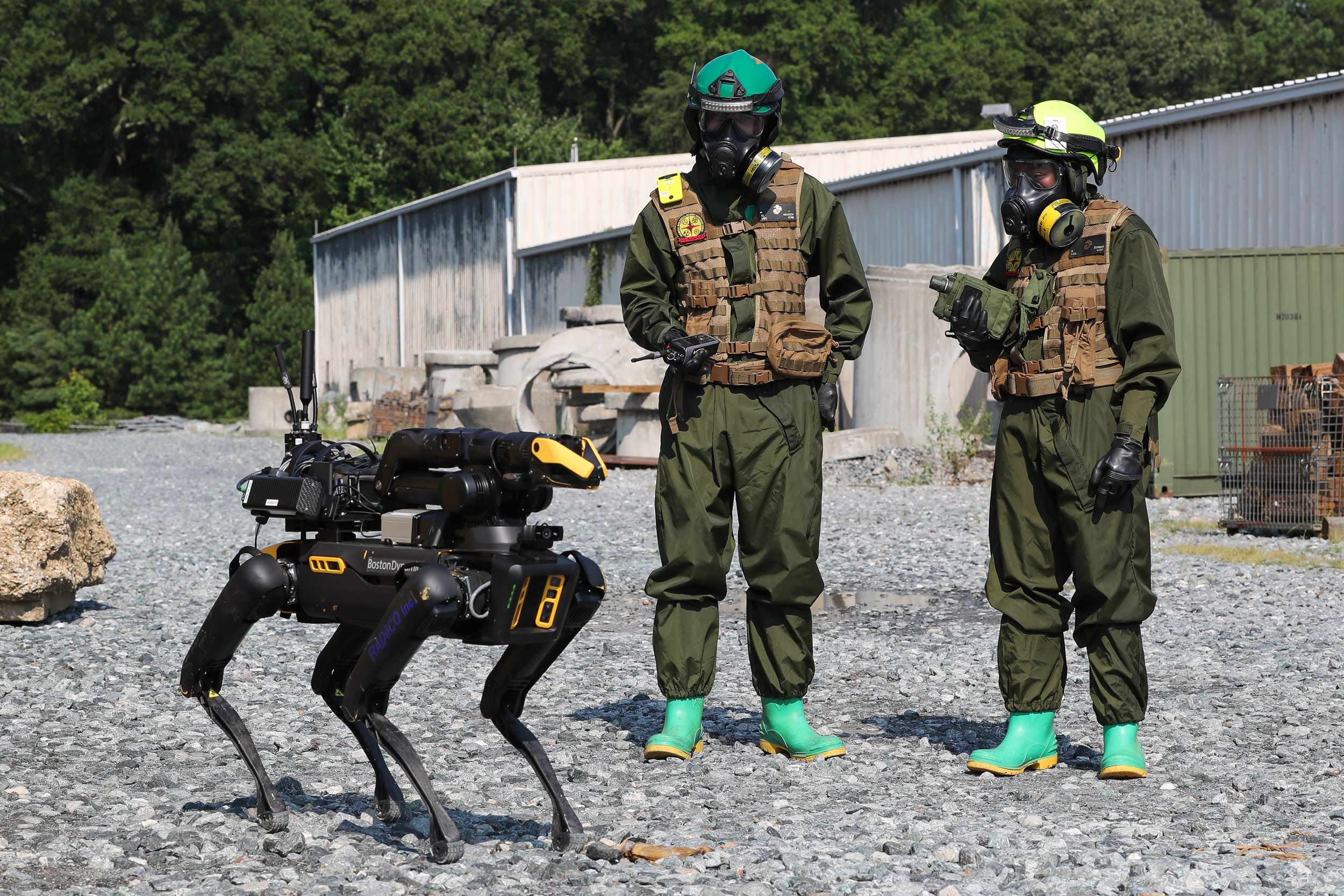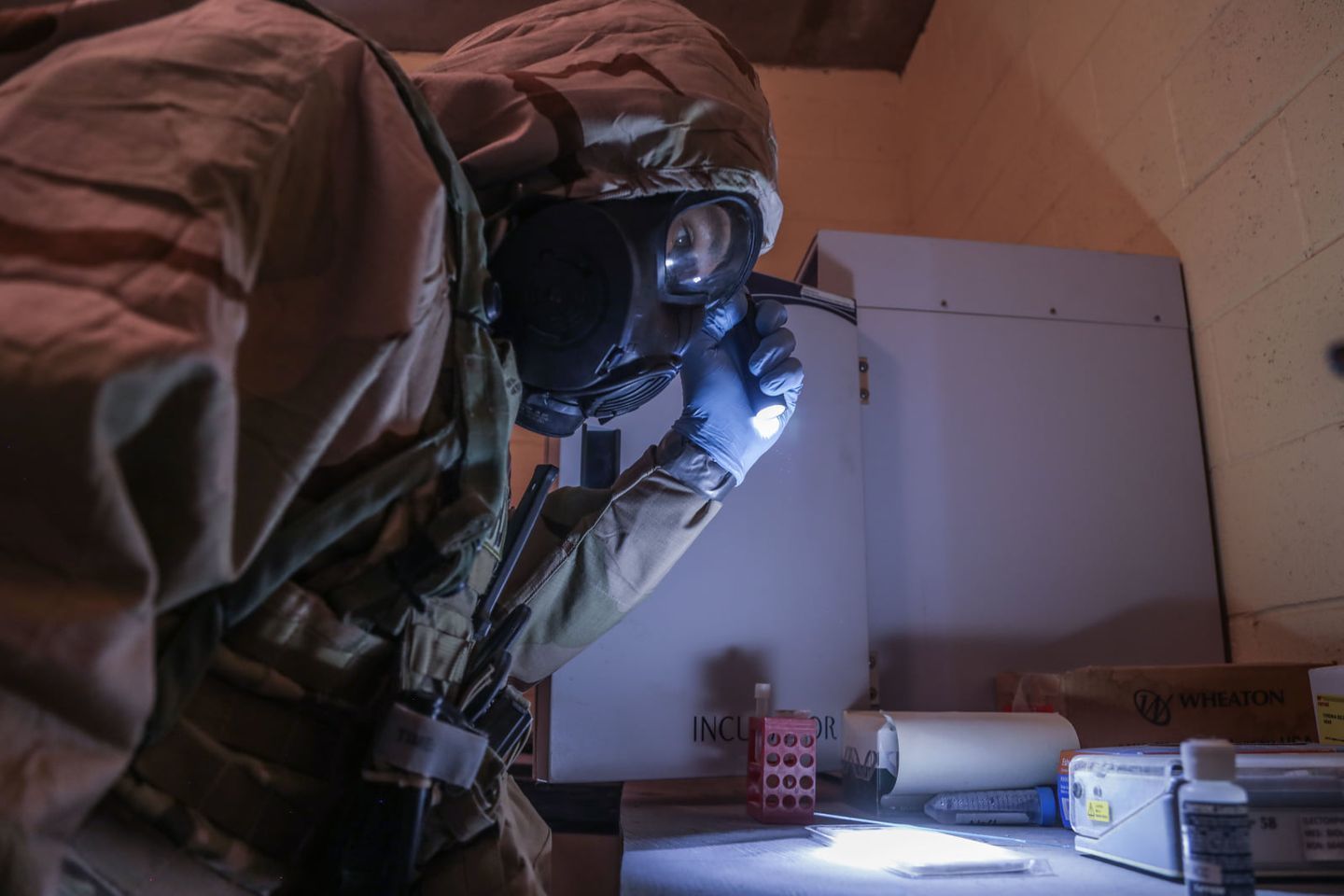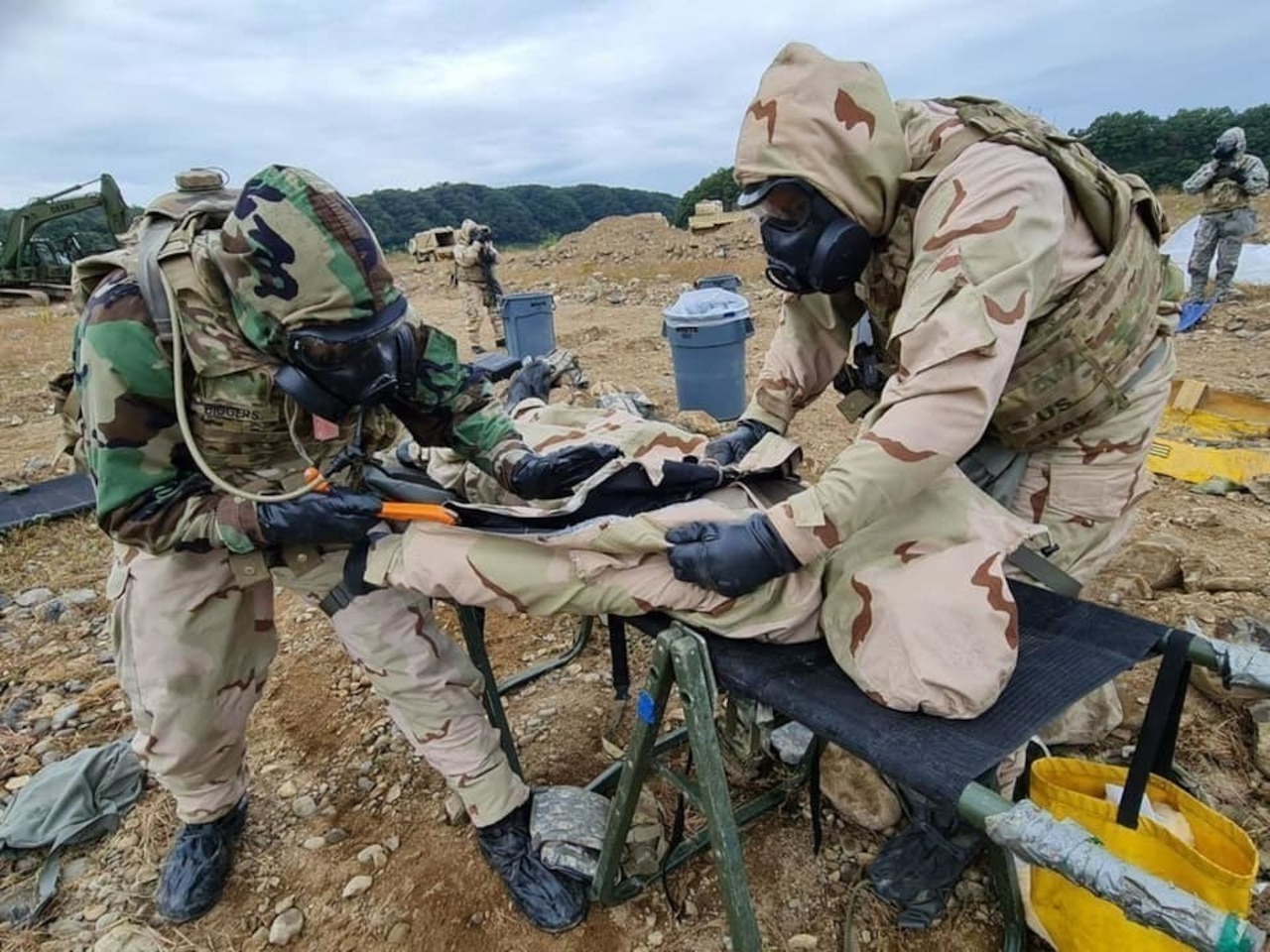US DoD Chemical, Biological Program Adapts to Emerging Threats as it Marks 30-Year Anniversary

Deputy Assistant Secretary of Defense for Chemical and Biological Defense Ian Watson said that threat landscape has evolved significantly since the creation of the Pentagon's program responsible for arming the joint force against chemical and biological risks in the wake of the Gulf War.
Technological advances have enabled near peer competitors to potentially engineer a broad range of agents at a speed and scale unlike decades before, he said. And those threats are now less detectable.
"The capabilities across high-performance computing, [artificial intelligence], material science and near peer competition far exceed anything that we were dealing with [in prior conflicts]," Watson said.
"We are dealing with very sophisticated capabilities that we are concerned about," he said. "And we're talking about if there's ever a conflict with one of those near peer competitions, unlike in Desert Storm, it will bring the entirety of the joint force into, and possibly susceptible to, chemical or biological attack. So, we have to protect everyone."
Congress created the DOD wide chemical and biological defense program in November 1993, after a government report noted U.S. forces were not sufficiently prepared to address Iraq's chemical and biological warfare capabilities.
Prior to the creation of the program under the Office of the Secretary of Defense, the military services were each responsible for developing their own chemical and biological defense capabilities.
Watson said other studies also noted a lack of interoperability among U.S. forces in responding to chemical and biological threats.
Those deficiencies spanned "nearly every aspect of chem bio defense across our detection, individual protection, collective protection and decontamination and medical programs," he said.
"Not only were the services showing up with a lack of interoperability between them, but they also had differing levels of protection, different levels of standards and different types of equipment," he said.
That combination resulted in severe deficiencies in the ability of U.S. forces to continue to fight through a chemical or biological attack.
The fallout could have changed the course of the war.
Senior defense officials at the time noted the debilitating psychological impact the use of biological and chemical weapons would have had on U.S. forces.
"One of my biggest concerns from the outset was the psychological impact of the initial use of chemical weapons on the troops.… if it stops them dead in their tracks and scares them to death," Army Gen. Norman Schwarzkopf Jr., who, as Commander of U.S. Central Command, oversaw the U.S. and coalition effort during the Gulf War, said in his 1991 testimony to the Senate Armed Services Committee.
Marine Gen. Walter E. Boomer, who led the Marine Corps' efforts during the war, remarked that chemical warfare was an "overriding concern" along with the potential for being outnumbered during the Gulf War.
"This just occupied most of my waking moments," he said in an interview with PBS Frontline.
Congress' mandate was to unify the disparate chemical and biological defense programs under the services into a single program that would manage and integrate that defense across the DOD.
The newly created defense wide program was charged with developing chemical and biological defense capabilities for the entire joint force. This includes detection and early warning of threats as well as providing U.S. forces with the tools to counter them on the battlefield, such as personal protective gear, decontamination equipment, and medical countermeasures.
Today the program oversees the chemical biological defense across the full continuum from initial research and experimentation through the delivery of new capabilities to the joint force.
In addition to arming the joint force against chemical agents and weaponized pathogens, the program has also overseen the DOD response to naturally occurring contagions including the development of mRNA technology used in the rapid development of vaccines during the COVID-19 pandemic.
The program also developed therapeutics used to treat Ebola. One of those treatments, Remdesivir, also became the first FDA-approved therapeutic for COVID-19.
Throughout its history, the Pentagon program has adapted to a constantly changing threat landscape.
The chemical and biological risks posed by non-state actors during the War on Terror, for example, were different than those posed by Iraq during the Gulf War.
Today, as DOD postures against near-peer competition it now must contend with a new era of chemical and biological threats.
The new era is marked by new capabilities that enable adversaries to engineer new agents rather than rely solely on those found in nature. This capability impacts the DOD's ability not only to detect emerging threats to U.S. forces but also its ability to attribute and defend against those threats.
New technology has also enabled potential adversaries to engineer chemical and biological threats at previously unmatched speed and scale.
Watson said the new threat profile is unlike anything that the U.S. has had to contend with in the past, especially as the program aligned itself with the 2022 National Defense Strategy, which prioritizes challenges posed by near-peer competitors such as Russia and China along with the threats posed by North Korea, Iran and violent extremist organizations.
To position the department to contend with the changing biothreat environment, Secretary of Defense Lloyd J. Austin III ordered the first of its kind Biodefense Posture Review, which was published earlier this year. Deborah Rosenblum, assistant secretary of defense for nuclear, chemical and biological defense programs, who helped oversee the BPR, noted it "outlines significant reforms and lays the foundation for a resilient total force that deters the use of bioweapons, rapidly responds to natural outbreaks, and minimizes the global risk of laboratory accidents."
To achieve that resilient total force, the DOD has doubled down on early warning and detection efforts to rapidly detect chemical and biological threats and develop medical countermeasures and changes to protective posture for U.S. forces at speed and scale.
"Building different types of sensor arrays, identifying different modalities [to protect] the joint force on the battlefield and understand what they're being subjected to is crucial because time will matter more in the future," Watson said.
He said innovation is critical in responding to the evolving threat and fielding effective early warning detection capabilities and countermeasures that enable the warfighter to operate in a contested environment.
Watson said the chemical biological defense workforce is focused on iterative development of technology to respond to threats.

And that technology extends far beyond gas masks and protective equipment. The program is experimenting, for example, with using the services' wearable technologies to provide early warning of exposure to biological threats. These can alert warfighters to possible sickness days before symptoms appear.
Watson said the program's approach is geared toward solutions that integrate automated sensors, creating a common operating picture of the threat and unencumbering the warfighter while still mitigating risks posed by emerging agents.
He said the department has recognized the imperative of ensuring that the warfighter is protected under the new paradigm and recognized chemical and biological defense as a key enabler to the overall integrated deterrence strategy.
"A lot of work has gone into not what we were, but what we're going to be for the next 20 years," Watson said. "Against the [current] threat profile ... and against the near peer threat, there is zero room for error for making sure that this program is entirely effective and efficient."

